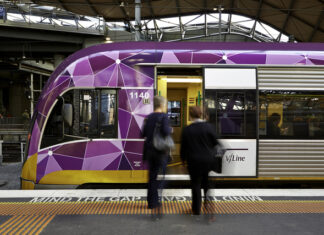THE state’s peak freight industry group has listed the Riddoch Highway as a high priority project that needs to be delivered within a five to 10 year timeframe.
South Australian Freight Council has launched Moving Freight 2019, which is its plan for the state’s future transport and logistics infrastructure.
The blueprint is also its primary submission into Infrastructure South Australia’s 20 Year State Infrastructure Strategy.
According to the report, the Riddoch Highway – which cuts through the heart of the South East – is an a vital corridor for Victorian tourist traffic, dairy and livestock movements as well as woodchips to the Port of Portland.
While the report suggests a full duplication is not warranted due to traffic volumes, heavily trafficked sections need upgrading.
Traffic volumes show 650 trucks per day – 16pc of all traffic near Mount Gambier – on average use the highway.
The cost of the upgrades was not listed in the report given the types and number of upgrades were not yet known.
Meanwhile, Dukes Highway – notorious for serious accidents and used regularly by South East residents heading to Adelaide – is also listed as a “future project” in the report.
“As traffic volumes increase, duplication of the Dukes Highway will become necessary,” the report said.
The document also calls for more planning in the use of new technology, including drones for things such as pizza deliveries or small packages to protect airspace.
The study also suggests this planning must include the fact trucks were getting longer and heavier as well as the increasing use of driverless and electric vehicles (including freight).
“South Australia is facing many new challenges as it confronts a changing economic structure and climate; and puts forward an ambitious growth agenda,” SAFC executive officer Evan Knapp said.
“An efficient infrastructure system for the transport and logistics sector will benefit all business through reduced cost structures; and every household through reduced costs for consumer goods.”
Moving Freight 2019 sets out comprehensive project priorities for five to 10 years, 10 to 20 years and “subject to demand” projects dependent on freight generating developments coming on stream.
A higher proportion of regional projects have been identified for these time periods, indicating a change in infrastructure investment focus will be required in the final 15 years of the state infrastructure strategy.
“The transport and logistics industry underpins every aspect of our state economy – every business requires inputs and the majority also require our services to deliver products to customers and end consumers,” Mr Knapp said.
“Efficient, effective and safe transport infrastructure is a competitive advantage that as a state we cannot afford to ignore,” he said.





